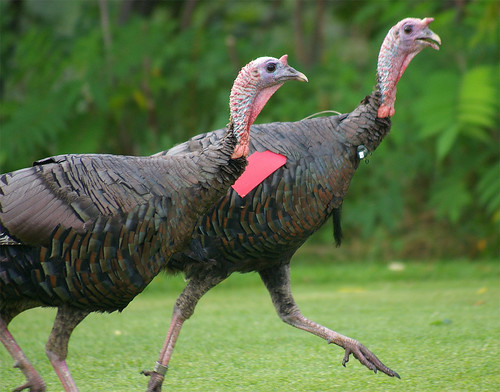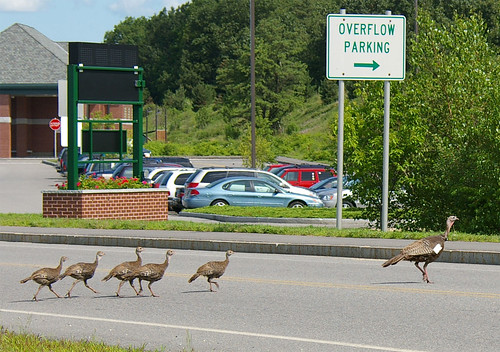
USDA wildlife biologists in New Hampshire have been hard at work keeping wild turkeys out of harm’s way.
Wild turkey populations are growing, with some birds wandering too close to airfields in New Hampshire and other states. That’s when APHIS Wildlife Services biologists are asked to step in and try to solve the problem of wayward gobblers getting too close to planes taking off and landing. Turkeys and other birds can be struck by aircraft, posing a danger to travelers, causing costly damage to aircraft, and endangering people with homes near airports.
Wildlife biologists in New Hampshire learned that there are certain times of day and year when turkeys are more likely to wander too close to airstrips. At these times of more intense turkey travel, biologists can focus their time chasing the large birds away from potential strikes with aircraft and motorists. Biologists use a number of tactics to scare away turkeys including light-and noise makers similar to fireworks.
In 2003 a fuel tanker aircraft struck turkeys near the Portsmouth International Airport at Pease, causing almost $3 million in damage to the military aircraft.
“Since we’ve implemented an integrated wildlife damage management program (IWDMP) consisting of habitat manipulation, pyrotechnics, and trap and relocate, the problem has taken a dramatic turn for the better. No turkeys have been struck since 2003 and the number of strikes by other species has been greatly reduced as well,” says USDA Wildlife Services New Hampshire biologist Angelic DeButts.

Over 50 percent of reported civilian aircraft strikes with turkeys cause damage to the plane and/or negatively affect flight.
DeButts adds, “Something else that has been a great success story is our public outreach and education in regards to feeding wildlife on and around airport property. Eliminating feeding of turkeys and other wildlife has gone a long way in making Pease airfield a much safer environment, not only for the flying military and public but for wildlife as well.”
While the airport biologists are helping turkeys stay safe and easing strike risks for holiday travelers, Wildlife Services biologists in Wisconsin assist growers of another Thanksgiving staple. There, wildlife biologists assist farmers in keeping deer, geese and even wolves from doing damage to the cranberry harvest.
For help identifying wildlife species involved in a strike or to obtain technical advice, direct assistance, or research on wildlife strikes, contact the U.S. Department of Agriculture’s Wildlife Services program at 1-866-487-3297.
